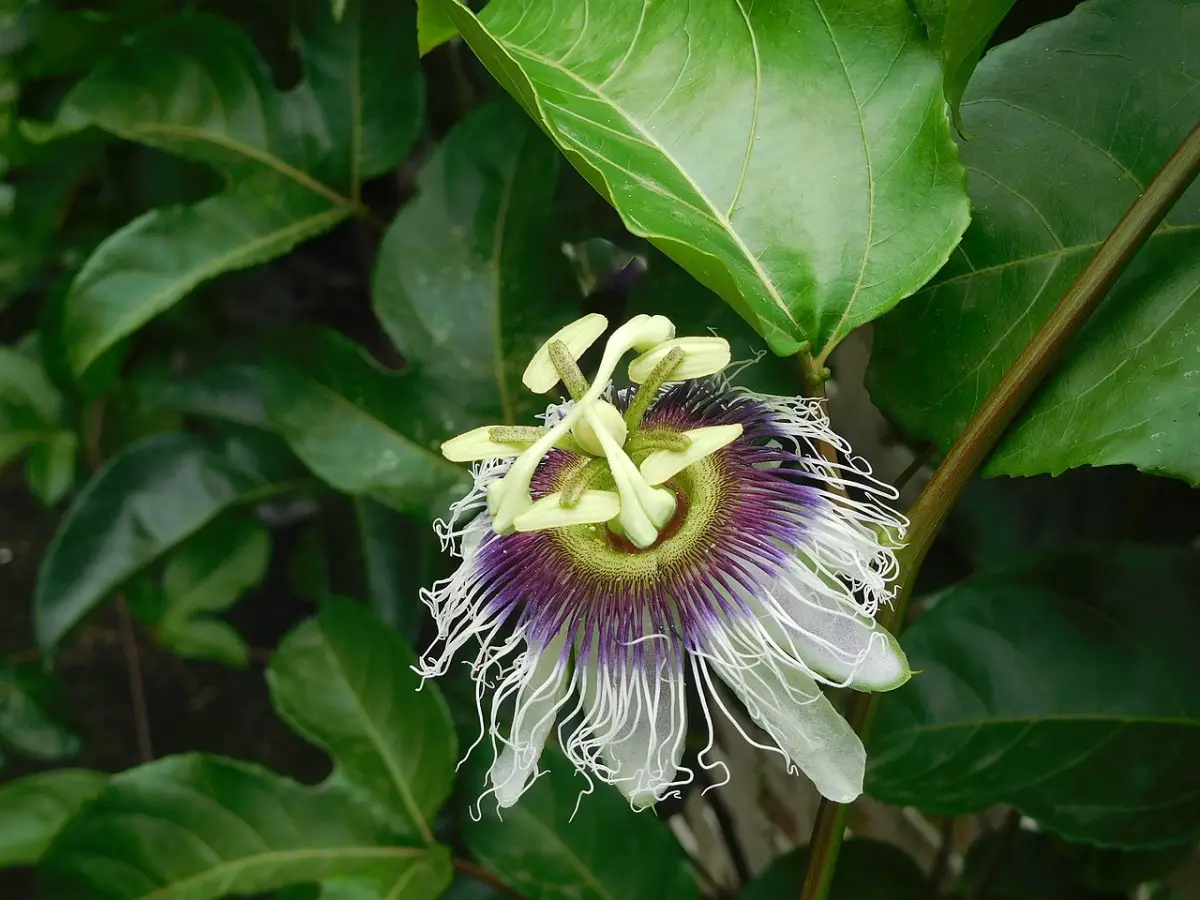


Image – Wikimedia / Philosophy gene
The passion fruit is a climber that is not only beautiful, but also produces edible fruit. For these reasons, it is a really interesting plant to grow in a garden, or even in a pot when there is no land to plant it on. The question that many people ask and that we are going to answer below is whether it is possible to grow it successfully in Spain, or if, on the contrary, it will be necessary to protect it at some point.
And, of course, being of tropical origin, it can be difficult to get it to survive the winter. But from the outset I will tell you that, of all the tropical and subtropical plants that we find in Spanish nurseries, this is one of the least demanding. So yes, is it possible to have passion fruit in Spain; yes, not in all provinces it will be as easy to care for.
Where does passion fruit originate from?
Image – Flickr / Dinesh Valke
Before knowing what to take into account to grow passion fruit in Spain, we have to find out about the climate in its place of origin, and where it lives. Thus, we can get an idea of what you need to be beautiful in our country.
And we are going to start by saying that it is native to tropical America; that is to say, it lives in areas where the climate is warm all year round and where, in addition, it rains frequently. To be more exact, grows in Brazil, Paraguay and northern Argentinaalthough it is also widely cultivated from the southeastern United States (Florida specifically), passing through Mexico, Central America and reaching the north of Argentina. If we want to be even more specific, that is, if we wanted to go see it in its natural habitat, we would have to go to the forests and jungles.
In addition, it is a climber that seeks direct sunlight, so it only does well in those forest areas where the canopy of trees and palms allow sunlight to reach the undergrowth. And yet, no matter how much light you have, you will always want more. Proof of this is its own genetics, which stimulates its growth to such an extent that it can reach 10-15 meters in height.
And how do you do it? has no tendrilsbut as its stems are fickle, they curl around the trunks and thus gain height.
Can you have it in Spain?
El passion fruit It is a plant that, personally, I have the impression that it is being grown more and more in Spain, since it is becoming easier to find it in nurseries and garden stores. And this is so for a reason: because it is not demanding, or at least not as demanding as other species that are also tropical, such as the Phalaenopsis orchids or the coconut palm. In fact, unlike these it can withstand the cold, and even light frosts of up to -2ºC as long as they are of very short duration and punctual.
And we can never forget its tropical origin, which is why it would also not be a good idea to have it outside if during the winter the temperature drops too muchOtherwise, the next day we would find it with very damaged leaves.
If we take this into account, it will be very interesting to grow passion fruit in many parts of the Canary Islands (especially at low altitudes, where the climate is warmer), as well as in other places both in the Iberian Peninsula (Malaga, Cadiz, etc.) like from the Balearic Islands (especially in the coastal towns).
How is passion fruit cared for in Spain?
Image – Flickr / Dinesh Valke
It is a plant that will grow only during the warm months, that is, in spring and summer. The rest of the year it will remain at rest, so the care we give it will have to be somewhat different from what we give it when it is active. But, what are those cares? Let’s see it:
- Location: as it needs lots and lots of direct light, it will need to be placed outside, in a sunny spot. For example, you can use it to cover an arch, a lattice or a wall, since it doesn’t matter if you have it in a pot or on the ground, since it adapts very well to living in either of those two places.
- Earth: it is indifferent to him, but it is important that they have good drainage. If it is going to be in a pot, we will put a universal substrate of a well-known brand, such as Flower.
- Irrigation: You have to water frequently in summer, and more if there is a heat wave. During that time, it may be necessary to water 3-4 times a week. The rest of the year, on the other hand, we will space the irrigations.
- Subscriber: very interesting to pay it with organic fertilizers, such as guano or earthworm humus, during its vegetative period (spring-summer).
- Harvest: passion fruit flowers are hermaphroditic, so only one plant is needed to get fruit. These are harvested in summer, when they feel a little soft when pressed gently.
The passion fruit is a climber with edible fruits that, as we have seen, needs little to be beautiful.

